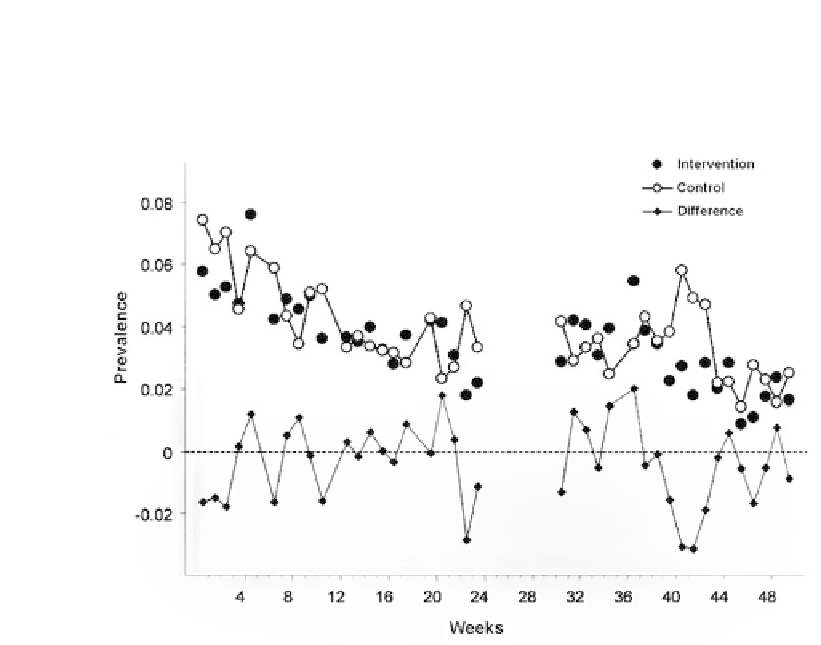Environmental Engineering Reference
In-Depth Information
The ICC was estimated as 0.0009 with a 95% posterior credible region between
(0.0001, 0.0025);
k
was estimated to be 0.27 with a 95% confi dence region of (0.11,
0.46).
Figure 2.
Weekly prevalence of child diarrheal illness.
Weekly points are derived from daily
prevalence data of each participating child.
Compliance
Community-based field workers who were living in the communities throughout the
study observed a mean SODIS-user rate of 32.1% in the intervention arm (minimum
13.5%, maximum 46.8%, based on their personal judgment) (Figure 3). The mean pro-
portion of households with SODIS-bottles exposed to the sun was 5 percentage points
higher than the assessment by community-based field workers. In contrast, almost
80% of the households reported using SODIS at the beginning and end of the follow-
up. About 14% of the households used the method more than two-thirds (>66%) of the
weeks during observation, and 43% of the households applied SODIS in more than
33% of the observed weeks (Table 4).
Diarrheal Illness by Compliance
No positive effect of compliance (proportion of weeks of observed SODIS use) on
the IRs in the intervention arm was observed. The incidence did not decline with the
increase of weeks using SODIS (Figure 4). Seasonal variation in compliance was ob-
served. The proportion of SODIS-practicing households was consistently below aver-
age during weeks 4-16 (January, 2005-April, 2006), which corresponded to the labor
intensive cultivating period from November to May.
















Search WWH ::

Custom Search